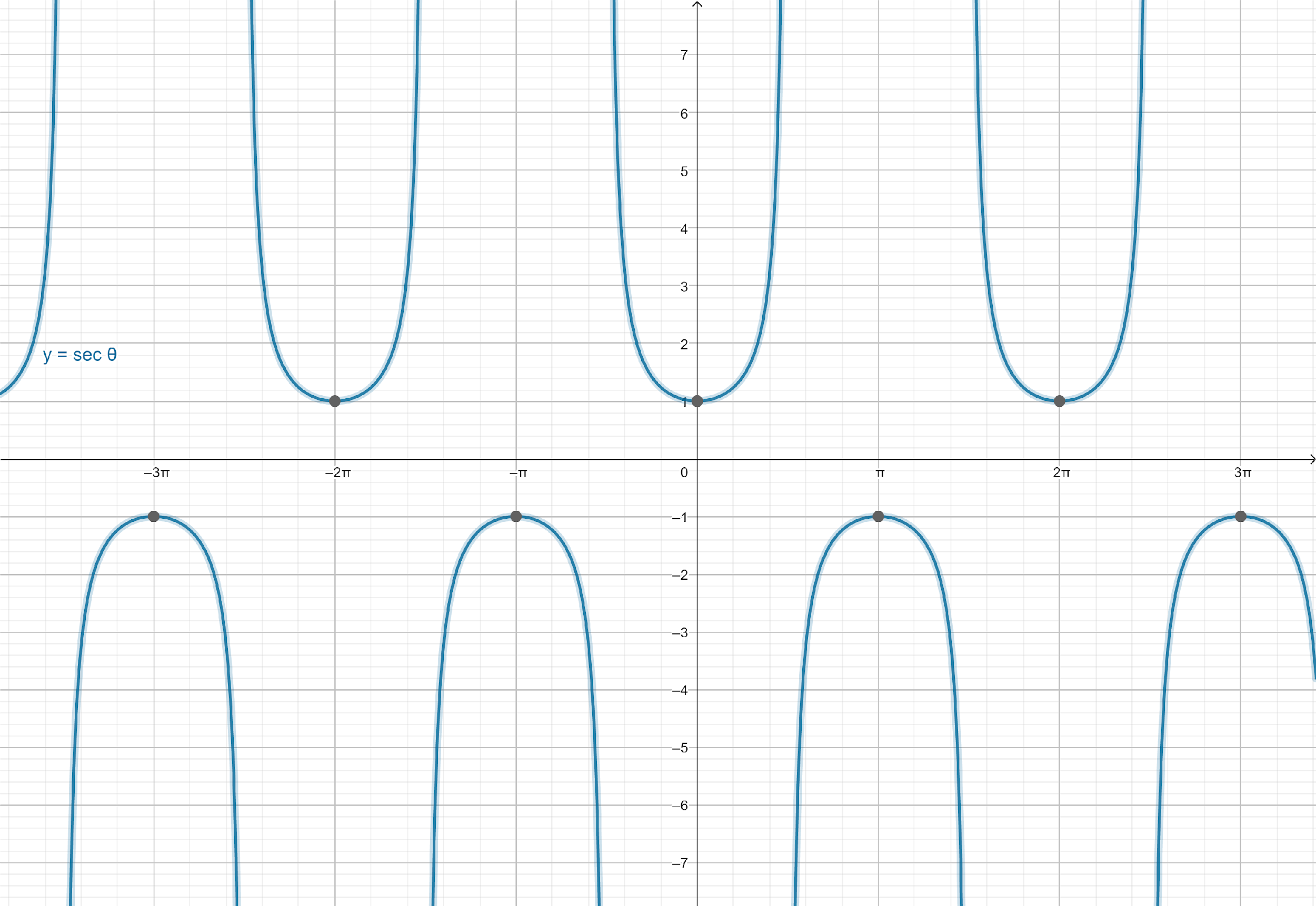Question
Question: How do you find the amplitude, period and graph \(y = \sec \left( {3\theta } \right)\)?...
How do you find the amplitude, period and graph y=sec(3θ)?
Solution
First find amplitude, period, phase shift, and vertical shift for given periodic function. Select a few points to graph. Find the points at θ=0, θ=18π, θ=9π, θ=3π, θ=32π. List the points in a table. Then graph the trigonometric function using the amplitude, period, phase shift, vertical shift and the points.
Formula used:
For the graph of y=asec(bx−c)+d
Amplitude: None
Period=∣b∣2π
Phase Shift =bc
Vertical Shift =d
Complete step by step answer:
We will use the form y=asec(bx−c)+d to find the amplitude, period, phase shift, and vertical shift.
Compare the given equation y=sec(3θ) with y=asec(bx−c)+d and find variables a,b,c and d.
a=1, b=3, c=0 and d=0.
Since the graph of the function sec does not have a maximum or minimum value, there can be no value for the amplitude.
Amplitude: None
Now, find the period using the formula ∣b∣2π.
So, we will calculate the period of the function using ∣b∣2π.
Period: ∣b∣2π
Replace b with 3 in the formula for period.
Period: ∣3∣2π
Solve the equation.
Here, we can observe that the absolute value is the distance between a number and zero.
The distance between 0 and 3 is 3.
Period: 32π
Divide 2π by 3.
Period: 32π
Now, we will find the phase shift using the formula bc.
So, we will calculate the phase shift of the function from bc.
Phase Shift: bc
Here, replace the values of c and b in the equation for phase shift.
Phase Shift: 30
Divide 0 by 3.
Phase Shift: 0
Find the vertical shift d.
Vertical Shift: 0
List the properties of the trigonometric function.
Amplitude: None
Period: 32π
Phase Shift: 0(0 to the right)
Vertical Shift: 0
Select a few points to graph.
Find the point at θ=0.
Replace the variable θ with 0 in the expression.
f(0)=sec(3×0)
Simplify the result.
The exact value of sec(0) is 1.
f(0)=1
The final answer is 1.
Find the point at θ=18π.
Replace the variable θ with 18π in the expression.
f(18π)=sec(3×18π)
Simplify the result.
The exact value of sec(6π) is 32.
f(18π)=32
The final answer is 32.
Find the point at θ=9π.
Replace the variable θ with 9π in the expression.
f(9π)=sec(3×9π)
Simplify the result.
The exact value of sec(3π) is 2.
f(9π)=2
The final answer is 2.
Find the point at θ=3π.
Replace the variable θ with 3π in the expression.
f(3π)=sec(3×3π)
Simplify the result.
The exact value of sec(π) is −1.
f(3π)=−1
The final answer is −1.
Find the point at θ=32π.
Replace the variable θ with 32π in the expression.
f(32π)=sec(3×32π)
Simplify the result.
The exact value of sec(2π) is 1.
f(32π)=1
The final answer is 1.
List the points in a table.
| x | f(x) |
|---|---|
| 0 | 1 |
| 18π | 32 |
| 9π | −1 |
| 3π | −21 |
| 32π | 1 |
The trigonometric function can be graphed using the amplitude, period, phase shift, vertical shift and the points.
Amplitude: None
Period: 32π
Phase Shift: 0(0 to the right)
Vertical Shift: 0
| x | f(x) |
|---|---|
| 0 | 1 |
| 18π | 32 |
| 9π | −1 |
| 3π | −21 |
| 32π | 1 |

Note: sec3θ and 3secθ are entirely different terms.
3secθ is thrice the secant of angle θ. It lies between −2 and 2.
sec3θ is the cosine of angle 3θ. It is three times the angle θ. The value of sec3θ is between −1 and 1.
